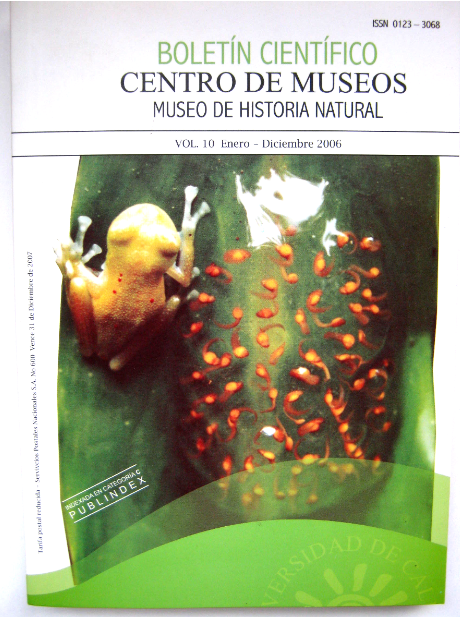Authors
Abstract
The article presents the contribution made to the knowledge on the floristic composition and structure of the Río Blanco Reserve, which is located on the western slop of the Central Cordillera of the Colombian Andes. This study is based on the analysis of two transects of 0.1 ha, where all the individuals e DAP higher or equal to 2.5 cm were sensed. 603 individuals with DAP higher or equal to 2.5 cm were registered, belonging to 73 species and morphospecies, distributed in 56 genera and 37 botanical families. The richness of species did not present an inverse relationship with the altitude in the evaluated gradient: El '' Mirador (2600 m) registered 53 species and Vía Bocatoma (2500 m) 52 species. The structural values are very similar in both transects, however, El Mirador transect, presented a mild increase in the total data. Hedyosmum bonplandianum and Miconia poecilantha were the species with the most ecological importance for each transect, with 57.6 and 58% of the values for the IVI. Also five species represent half of the percentage of the IVI in both transects. Melastomataceae was the family with the most number of species, followed by Actinidiacea Boraginaceae, Cyatheaceae, Rubiaceae and Asteraceae, according to the IVF records, where Melastomataceae, Chloranthaceae, Cyatheaceae, Actinidiaceae, Asteraceae and Rubiaceae are the families with the most ecological importance. A remarkable EE i in the structural level, as well as in the floristic composition existed, regarding records presented in other similar studies, justifying these variations on the former soil usage for extensive livestock, on the actual successional Dynamic in a strongly fragmented landscape, in which monotypical protective forests were established, requiring a native- diversity friendly management.

 PDF (Español)
PDF (Español)
 FLIP
FLIP


















